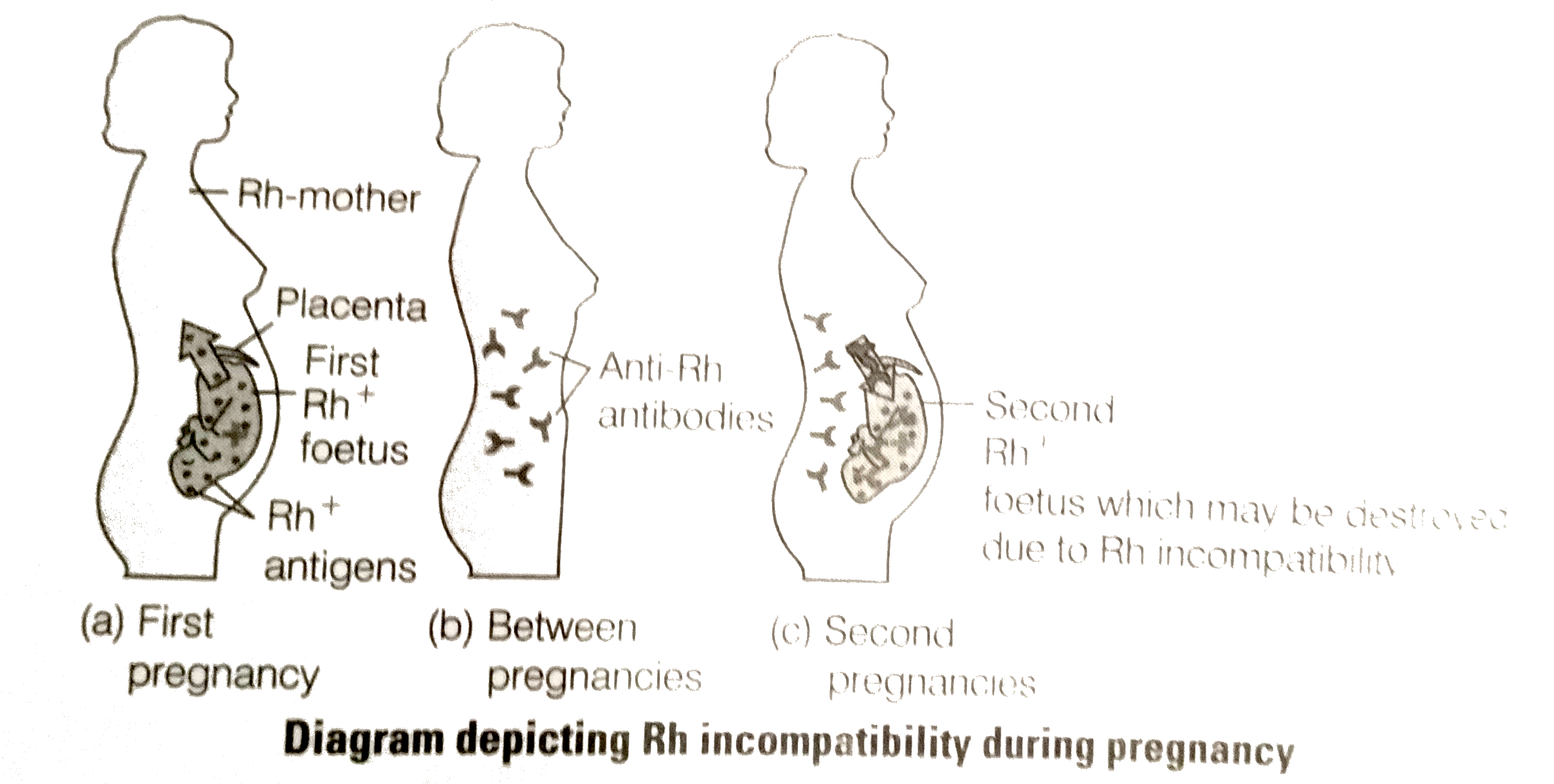Explain Rh-incompatibility in humans.
Video Solution
Text Solution
Rh antigen is observed on the surface of RBCs of majority (nearly 80%) of humans. Such individuals are called Rh positive Rh+ and those individuals where this antigen is absent are called Rh negative RH−.
Both Rh+ and Rh− individuals are phenotypically normal. The problem in them arises during blood transfusion and pregnancy.
(i) Incompatibility During Blood Transfusion The first blood transfusion of Rh+ blood to the person with blood causes no harm because the RH− person develops anti Rh factors or antibodies in his/her blood.
In second blood transfusion of Rh+ blood to the Rh− person. the already formed anti Rh factors attack and destroy the red blood corpuscles of the donor. (ii) Incompatibility During Pregnancy If father's blood is Rh+ mother blood is Rh− and the foetus blood is Rh−. it will lead to a serious problem. Rh antigens of the foetus do not get exposed to the Rh− ve blood of the mother in the first pregnancy as the two bloods are well separated by the placenta.
But in the subsequent Rh+ foetus. the anti Rh factors (antibodies) of the mother destroy the foetal red blood corpuscles due to mixing of blood.
This result in the Haemolytic Disease of the New Born (HDN). called as erythroblastosis foetalis. In some cases new born may survive but will be anaemic and may also suffer with jaundice. 
This condition can be avoided by adiministering anti-Rh antibodies of the mother immediately after the delivery of the first child.
|
Topper's Solved these Questions
- Body Fluids and Circulation Book:NCERT EXEMPLAR ENGLISHChapter:Body Fluids and Circulation Exercise:SHORT ANSWER TYPE QUESTION
Explore 9 Videos
- BIOMOLECULES Book:NCERT EXEMPLAR ENGLISHChapter:BIOMOLECULES Exercise:Long Answer Type Questions
Explore 5 Videos
- BREATHING AND EXCHANGE OF GASESBook:NCERT EXEMPLAR ENGLISHChapter:BREATHING AND EXCHANGE OF GASESExercise:SATQ
Explore 7 Videos
Similar Questions
Knowledge Check
Assertion : Self-incompatibility is a genetic mechanism which prevents self-pollination and thereby fertilisation by inhibiting either pollen germination or pollen tube growth in the pistil.
Reason : In gametophytic self-incompatibility, the incompatibility reaction is determined by the genotype of the sporophytic tissue of the plant from which the pollen is derived.AIf both assertion and reason are true and reason is the correct explanation of assertionBIf both assertion and reason are true but reason is not the correct explanation of assertionCIf assertion is true but reason is falseDIf both assertion and reason are false
The antibody that is capable of crossing the placental barrier and is responsible for the Rh incompatibility between an Rh negative mother and an Rh positive foetus is
View SolutionWhich type of antibody molecules is involved in ABO - incompatibility reaction?
View SolutionThe proteinaceous substance involved in sporophytic incompatibility and stored in the exine is derived from
View SolutionName the type of pollination in self-incompatible plants.
View SolutionExplain the histology of human gut.
View SolutionRh incompatibility occurs when mother and foetus
View SolutionDefine self-incompatibility. How do self-incompatible plants pollinate?
View Solution

